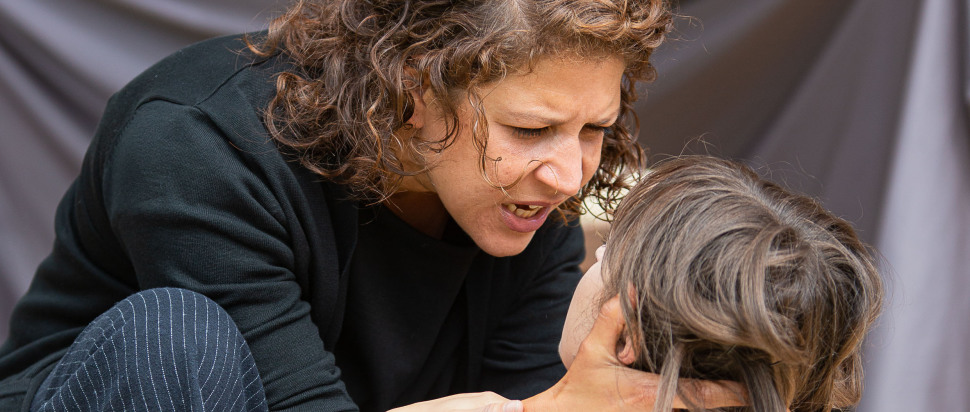Hamlet @ Bard In The Botanics, Glasgow
In the beautiful surroundings of Glasgow Botanic Gardens, something rotten unfolds in the state of Denmark
It’s an issue for all directors of Hamlet: how to provide a new perspective on Shakespeare’s best known and longest play. In director and designer Gordon Barr’s production as part this year’s Bard in the Botanics season, this is principally achieved through the gender-switching of the main character. This in itself is hardly a new practice: for decades and even centuries, women have been playing the Prince – or Princess – of Denmark. Most of the other characters, however, retain the gender assigned to them in the original text, which casts Hamlet’s relationship with Ophelia in an interesting new light. Instead of male abuser and female victim, they are a lesbian couple, their love accepted without question by their families.
Nicole Cooper is excellent as the mentally unstable Hamlet, subject to violent mood swings and paranoid thoughts. Stephanie McGregor ticks all the boxes as the tragic Ophelia, but it’s a traditional, safe performance. The same can be said for most of the other performances as although this is a modern Hamlet, with guns and suits, the cast is by the numbers. Hamlet might be a woman, but this is Shakespeare as we know it.
In fairness, that is probably what most theatregoers want, and in this regard its a fine production. At times, however, the performances verge on hammy, especially those of the principal male actors Alan Mirren (a handsome Claudius) and Alan Steele (Polonius and other roles). Steele also stands in for the Ghost of Hamlet’s late father, but because of the rapid turnaround between scenes, his face is bedecked throughout in a ghostly white powder, which makes it hard to take his other roles seriously. If the curse of Macbeth is its name, the curse of Hamlet is its fame. So well-known are some of its quotes and scenes, they jolt the audience out of the drama of the moment.
Performed on an elegant wooden stage in the beautiful surroundings of Glasgow Botanic Gardens, the decline of the evening light reflects the descent of the play into ever murkier darkness. Yet, even with a stripped-down cast of eight actors playing thirteen characters (as opposed to over twenty in the original), it is a long play, and some members of the audience left during the first act, perhaps due to the chilly temperature. So, if you go to see Hamlet at the Botanics, be sure to wrap up warm!
